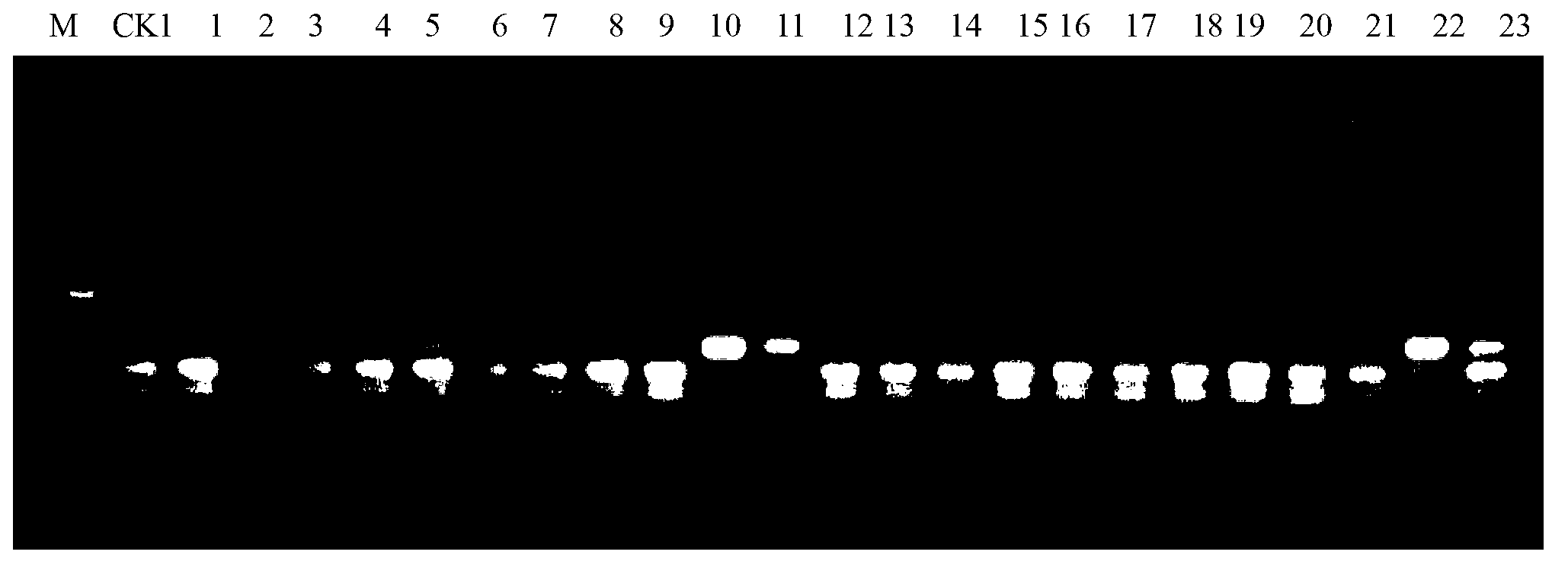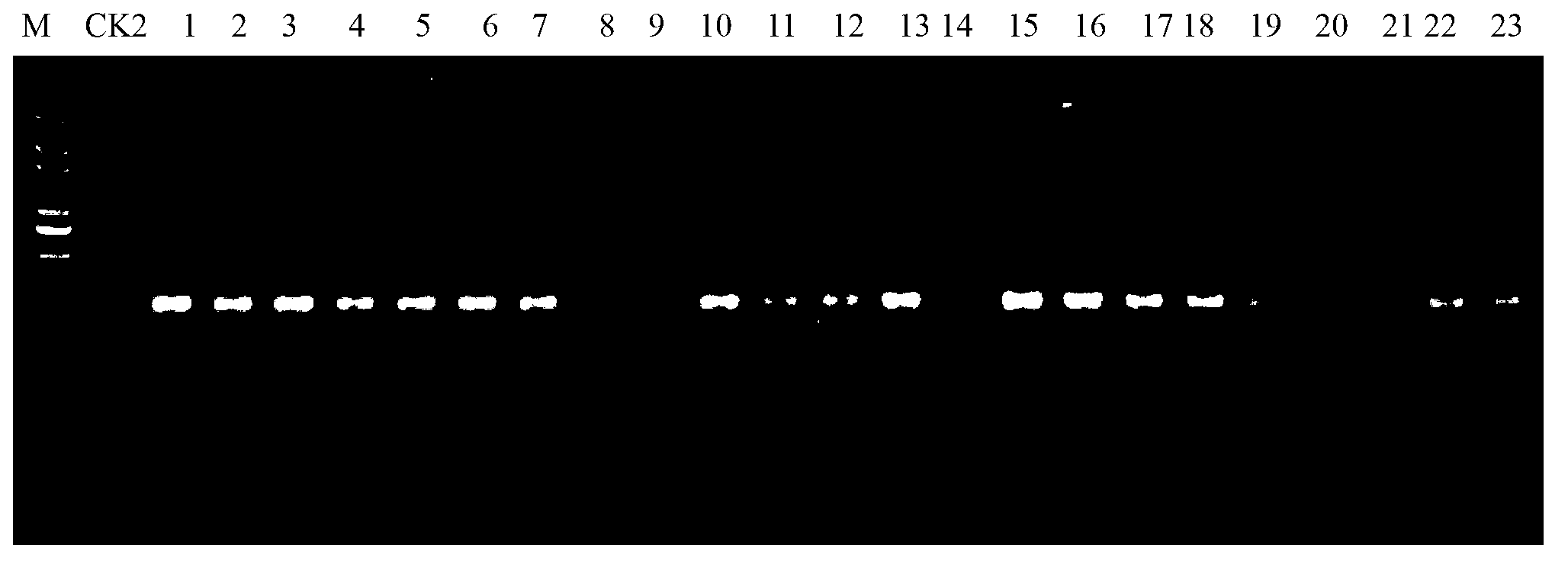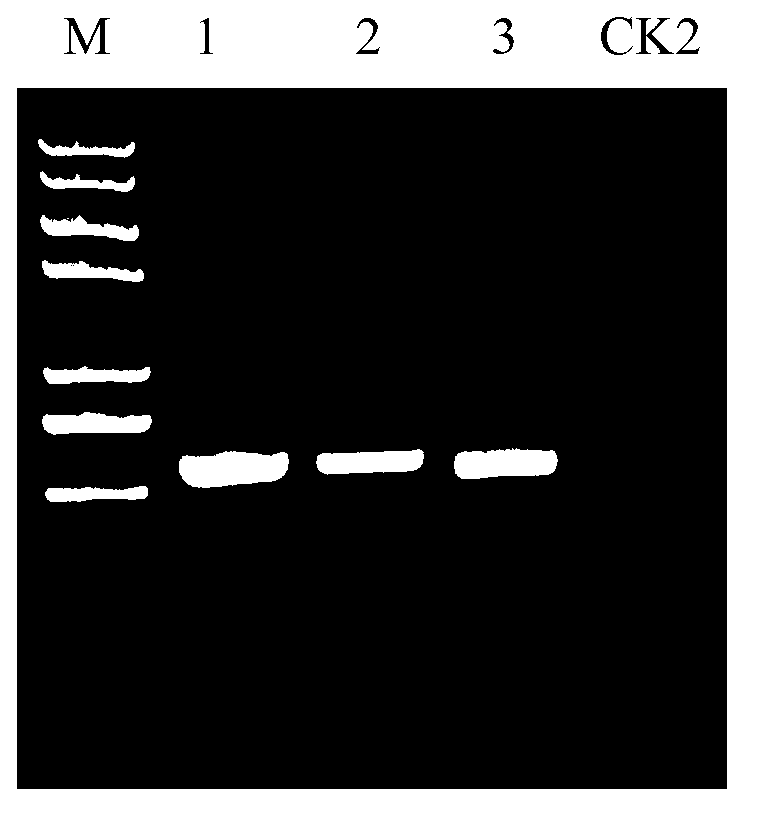Rice gene BADH2 site-directed knockout system and application thereof
A technology of fixed-point knockout and rice, which is applied in the fields of application, genetic engineering, plant gene improvement, etc., and can solve problems such as complex and long periods
- Summary
- Abstract
- Description
- Claims
- Application Information
AI Technical Summary
Problems solved by technology
Method used
Image
Examples
Embodiment 1
[0036] Embodiment 1, the sequence and analysis of rice gene BADH2
[0037] The sequence of the rice gene BADH2 is shown in sequence 1 of the sequence listing. Sequence analysis shows that the gene includes 15 exons in total, which are the 1st-108th (first exon), the 208th-351st (second exon), the 1404th- 1485 (third exon), 1581-1729 (fourth exon), 2427-2519 (fifth exon), 2651-2775 (sixth exon), 2651-2775 (sixth exon) 2860-2923 (the seventh exon), 3114-3180 (the eighth exon), 3873-3949 (the ninth exon), 4305-4418 (the tenth exon) , 4819-4896 (11th exon), 4978-5129 (12th exon), 5233-5294 (13th exon), 5566-5672 (13th exon) Exon 14), positions 5771-5860 (exon 15).
[0038] In the present invention, the sequences on the second exon and the fourth exon are used as target sequences of transcription activator-like effector nucleases (TALENs).
Embodiment 2
[0039] Embodiment 2, TALENs design and construction of its recombinant expression vector
[0040] 1. Selection of TALENs target sequences
[0041] 1. Target sequence A targets the second exon of rice gene BADH2, the sequence is as follows:
[0042] 5'-GAAGAGGAACCGGGGCCgcgactgg gcgcgc gcgcCGGGCGCCGTCCGGGCC-3' (No. 273 to No. 324 of Sequence Listing Sequence 1); the lowercase letters in it are spacer sequences, and the uppercase letters on both sides are TALENs module recognition sequences (named L-a and R-a respectively); the underline is BssH Ⅱ Enzyme recognition sequence;
[0043] 2. Target sequence B targets the fourth exon of rice gene BADH2, the sequence is as follows:
[0044] 5'-GCTGGATGCTTTGAGTActttgc agatct tgcagaATCCTTGGACAAAAGGC-3' (No. 1589 to No. 1640 of Sequence Listing Sequence 1); the lowercase letters in it are spacer sequences, and the uppercase letters on both sides are TALEN module recognition sequences (named L-b and R-b respectively); the underline i...
Embodiment 3
[0056] Embodiment 3, the acquisition of recombinant Agrobacterium tumefaciens
[0057] The recombinant vector pGW3-BADH2b obtained in Example 2 was heat-shocked to transform the Agrobacterium strain AGL-1 to obtain a recombinant Agrobacterium containing the recombinant vector pGW3-BADH2b, which was named AGL-1 / pGW3-BADH2b;
[0058] The recombinant vector pGW3-BADH2a obtained in Example 2 was transformed into Agrobacterium strain AGL-1 by heat shock to obtain a recombinant Agrobacterium containing the recombinant vector pGW3-BADH2a, which was named AGL-1 / pGW3-BADH2a.
[0059] At the same time, the empty vector pGW3 was heat-shocked to transform the Agrobacterium strain AGL-1, and the recombinant Agrobacterium containing the recombinant vector pGW3-BADH2a was obtained, which was named AGL-1 / pGW3.
PUM
 Login to View More
Login to View More Abstract
Description
Claims
Application Information
 Login to View More
Login to View More - R&D
- Intellectual Property
- Life Sciences
- Materials
- Tech Scout
- Unparalleled Data Quality
- Higher Quality Content
- 60% Fewer Hallucinations
Browse by: Latest US Patents, China's latest patents, Technical Efficacy Thesaurus, Application Domain, Technology Topic, Popular Technical Reports.
© 2025 PatSnap. All rights reserved.Legal|Privacy policy|Modern Slavery Act Transparency Statement|Sitemap|About US| Contact US: help@patsnap.com



